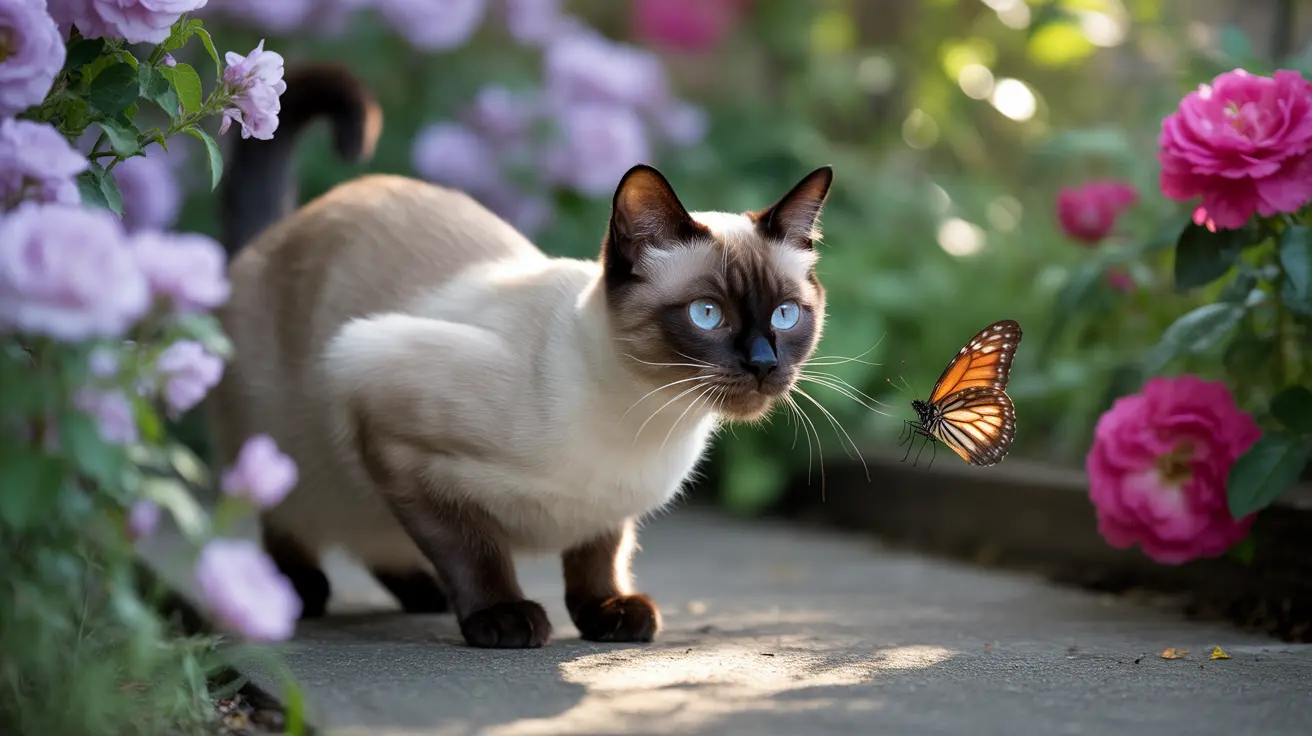A Complete Guide to Cat Breeds with Blue Eyes: Genetics, Breeds, and Special Considerations
Blue eyes in cats are a captivating feature that has fascinated cat lovers for generations. While all kittens are born with blue eyes, only certain breeds retain this striking characteristic into adulthood. Understanding which cat breeds have blue eyes and the genetic factors behind this trait can help potential pet owners make informed decisions about their future feline companions.
The Science Behind Blue Eyes in Cats
Blue eyes in cats occur due to a lack of pigmentation in the iris. While all kittens are born with blue eyes because their melanin production hasn't fully developed, most cats' eyes change color between 6-8 weeks of age. However, certain breeds maintain their blue eyes into adulthood due to specific genetic factors.
The presence of blue eyes in adult cats is often linked to two primary genetic factors: the pointed gene and the white spotting gene (W). The pointed gene, commonly found in Siamese and related breeds, restricts color to the cooler parts of the body and results in blue eyes. The white spotting gene can produce blue eyes in white cats but may also be associated with deafness.
Popular Cat Breeds with Blue Eyes
Siamese and Related Breeds
The Siamese cat is perhaps the most well-known blue-eyed breed. These cats always have striking blue eyes as part of their breed standard. Related breeds include:
- Balinese - Known as the long-haired version of the Siamese
- Himalayan - A Persian cat with Siamese coloring
- Thai - The traditional Siamese cat with a more moderate body type
- Javanese - Features a color point coat with longer hair
Ragdoll Cats
Ragdolls are known for their large size, semi-long coat, and striking blue eyes. These gentle giants have a pointed coat pattern and always possess blue eyes, ranging from pale to deep blue. They're particularly known for their docile and affectionate nature.
Birman
The Sacred Cat of Burma, as Birmans are sometimes called, features a color point coat with white gloves on all four paws. Their sapphire blue eyes are a defining characteristic of the breed, complementing their luxurious coat and distinctive markings.
Other Blue-Eyed Breeds
Several other breeds can have blue eyes, including:
- Snowshoe - A breed that combines Siamese and American Shorthair characteristics
- Snow Bengal - A variation of the Bengal cat with blue eyes
- Ojos Azules - A rare breed known specifically for its deep blue eyes
- Turkish Angora - Can have blue eyes, especially in white-coated individuals
Health Considerations for Blue-Eyed Cats
The White Cat Connection
White cats with blue eyes require special consideration due to potential health issues. Approximately 60-80% of white cats with blue eyes are deaf in one or both ears. This genetic link is associated with the white spotting gene (W), which affects both coat color and inner ear development.
Breeding Considerations
Due to the high risk of deafness in white cats with blue eyes, some countries have implemented breeding restrictions. For example, in Germany, breeding two completely white cats is restricted to prevent the perpetuation of genetic health issues.
Care Tips for Special Needs Cats
If you have a deaf white cat with blue eyes, consider these important care guidelines:
- Keep them indoors to prevent accidents
- Use visual cues for communication
- Maintain consistent routines
- Create a safe environment with proper barriers
Frequently Asked Questions
Are all blue-eyed cats deaf?
No, not all blue-eyed cats are deaf. The correlation between blue eyes and deafness is strongest in white cats carrying the W gene. Breeds like Siamese, which have blue eyes due to different genetic factors, are not prone to deafness.
Why do some cats have different colored eyes?
Different colored eyes (heterochromia) occurs due to genetic factors affecting melanin distribution in the irises. This condition is more common in white cats and certain breeds.
Do blue-eyed cats have special personality traits?
While many blue-eyed breeds are known for being vocal and social, these traits are linked to breed characteristics rather than eye color itself.
At what age do kittens' eyes change color?
Kittens' eyes typically begin changing color around 6-8 weeks of age, with their permanent eye color established by 12-16 weeks.
Are blue-eyed cats rare?
Blue eyes in adult cats are relatively rare outside of specific breeds like Siamese, Ragdoll, and Birman. In random-bred cats, blue eyes are uncommon unless associated with white fur.
Can two parents without blue eyes produce blue-eyed kittens?
Yes, if both parents carry the genetic factors for blue eyes, they can produce blue-eyed offspring, though this is more common in specific breeds.
Understanding the unique characteristics and potential health considerations of blue-eyed cats can help potential owners make informed decisions about adding these beautiful felines to their families. Whether you're drawn to the classic Siamese or the gentle Ragdoll, blue-eyed cats offer a diverse range of personalities and appearances to suit any cat lover's preferences.






